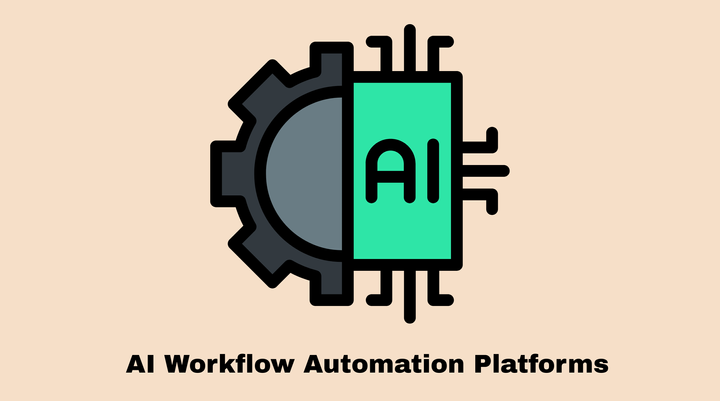21 Simple Ways to Automate Your Business in 2025 with Examples

Running a business and thinking about automation? Here's what might be on your mind:
- How can I save time and focus on what really matters?
- What types of automation will benefit my business the most?
- Could automation help cut costs and drive growth?
Let’s dive into the 21 best ways to automate your business activities, answering all your questions and helping you craft an effective strategy for your organization.
In this article:
Why Automate Business Activities?
Simple Ways to Automate Your Business
How viaSocket can help you Automate Your Business?
Why Automate Business Activities?
Automating business activities isn't just a trend—it's a strategic move that can lead to significant time and cost savings, allowing you to focus on what truly matters. Let's explore some compelling reasons to embrace automation, supported by relevant statistics:
1. Boost Efficiency and Productivity
Automation streamlines repetitive tasks, enabling your team to concentrate on strategic initiatives. In fact, 60% of all occupations could save up to 30% of their time with business process automation.
2. Reduce Operational Costs
By minimizing manual errors and accelerating processes, automation can substantially lower operational expenses. According to Paperform Survey, the global business process automation market is projected to grow from $9.8 billion in 2020 to $19.6 billion by 2026, reflecting its cost-saving potential.
3. Enhance Customer Experience
Automated systems ensure timely responses and consistent service quality, leading to improved customer satisfaction. Notably, 43% of respondents stated that improving customer experience was the most important advantage gained from marketing automation.
Source : Paperform
4. Improve Employee Satisfaction
By automating mundane tasks, employees can engage in more meaningful work, boosting morale and job satisfaction. A study found that 91% of Australian workers who have experience working with robots said it had changed their workplace for the better.
5. Gain Competitive Advantage
Early adoption of automation technologies can position your business ahead of competitors, as 67% of companies are already using business process automation solutions to improve visibility across different systems. Incorporating automation into your business strategy not only addresses current operational challenges but also prepares your organization for future growth and innovation.
Simple Ways to Automate Your Business
By automating key areas of your business, you can free up time to focus on growth and innovation. Here are some simple ways to get started with business automation:
1. Administrative Task Automation
Objective: Address time-consuming admin tasks that can be automated to improve efficiency.
Key Points:
- Automated Scheduling: Use tools like Calendly to automate meeting or appointment bookings.
- Automated Invoicing & Payments: Tools like QuickBooks can automate invoicing and payment reminders.
- Document Management: Use Google Workspace or Dropbox to automate document sharing and storage.
Example: "Instead of manually scheduling meetings, use Calendly to let clients pick a time that fits into your calendar. Automating this simple task can save hours of back-and-forth emails."
2. Customer Communication Automation
Objective: Demonstrate how to improve customer interactions through automated communication channels.
Key Points:
- Email Automation: Tools like Mailchimp allow you to automate newsletters, welcome emails, or follow-ups.
- Chatbots: Use ManyChat or Intercom to automate responses to customer inquiries on your website or social media.
- SMS Reminders: Tools like Twilio can automate appointment or order reminders via SMS.
Example: "With tools like ManyChat, you can set up a chatbot to instantly answer customer queries, even when you’re not available. This improves customer satisfaction while reducing manual work."
3. Marketing Automation
Objective: Show how marketing efforts can be automated to maintain consistency and reach a larger audience.
Key Points:
- Social Media Scheduling: Use tools like Hootsuite to schedule posts across multiple social media platforms.
- Email Marketing: Automate email campaigns using HubSpot or ActiveCampaign.
- Lead Generation: Use viaSocket to connect Facebook lead ads to your CRM for seamless lead capture.
Example: "Keep your social media presence consistent by scheduling posts in advance using Hootsuite, so you can focus on other parts of your business without worrying about daily content posting."
4. Sales Automation
Objective: Automate lead nurturing, follow-ups, and the sales process to close deals faster.
Key Points:
- CRM Automation: Tools like Salesforce or HubSpot can automate lead nurturing and follow-ups.
- Sales Pipeline Automation: Use Pipedrive to automatically track deals, send reminders, and manage sales tasks.
- Automated Proposals & Contracts: Platforms like PandaDoc allow for automated document signing and contract management.
Example: "Using a CRM like HubSpot can help you automate email follow-ups with leads, ensuring no opportunity slips through the cracks while keeping your sales process organized."
5. Automating Financial Management
Objective: Simplify the often-complicated task of managing finances by automating bookkeeping, invoicing, and tax reporting.
Key Points:
- Accounting Automation: Use tools like Xero or QuickBooks to automate bookkeeping, payroll, and invoicing.
- Expense Tracking: Apps like Expensify can automatically categorize and track business expenses.
- Tax Filing Automation: Use TurboTax to automate tax preparation and filing.
Example: "Automating your invoicing with QuickBooks not only saves you time but also ensures you get paid faster by sending automatic reminders to customers when invoices are due."
6. Inventory Management Automation
Objective: For product-based businesses, automate inventory management to ensure accurate stock levels and efficient order processing.
Key Points:
- Inventory Tracking: Tools like TradeGecko or Shopify automate stock level updates and order management.
- Automatic Reordering: Set up automatic reorder triggers when stock runs low to avoid running out of popular items.
Example: "With Shopify's inventory management system, stock levels are automatically updated as orders come in, making it easier to avoid overselling or stockouts."
7. Automating Customer Service
Objective: Enhance customer support with automated solutions that provide instant answers and streamline issue resolution.
Key Points:
- Help Desk Automation: Tools like Zendesk can automate ticket assignment and track customer inquiries.
- Chatbots: Intercom and ManyChat can automate initial responses to customer questions.
- Knowledge Base Automation: Set up self-service help centers using HelpJuice to let customers solve issues on their own.
Example:"Instead of manually responding to common questions, set up a chatbot using ManyChat to answer FAQs and direct customers to relevant resources."
8. E-commerce Automation
Objective: Automate key aspects of running an online store, from order processing to customer communication.
Key Points:
- Order Processing Automation: Use Shopify or WooCommerce to automate the order fulfillment process.
- Automated Email Receipts & Order Updates: Tools like Klaviyo can automate transactional emails, such as order confirmations and shipping updates.
- Automated Abandoned Cart Emails: Send reminders to customers who haven’t completed their purchase using Klaviyo or Shopify’s built-in tools.
Example:"Send automated abandoned cart emails through Klaviyo to recover lost sales, reminding customers to complete their purchase."
9. Project Management Automation
Objective: Automate task delegation, project timelines, and progress tracking for better team collaboration.
Key Points:
- Task Automation: Use Asana or Trello to automate task assignments and set deadlines.
- Project Timeline Automation: Set up automatic reminders and updates on project status with tools like Monday.com.
- Recurring Task Automation: Automate recurring tasks like weekly reports or monthly meetings with tools like ClickUp.
Example:"In Asana , you can set up recurring tasks like weekly team check-ins or monthly performance reviews to ensure nothing falls through the cracks."
10. Employee Management Automation
Objective: Automate HR tasks, from recruitment to payroll, to ensure smooth employee management.
Key Points:
- HR Automation: Use BambooHR to automate employee onboarding, performance tracking, and offboarding.
- Payroll Automation: Tools like Gusto handle automated payroll, benefits management, and tax filing.
- Timesheet Automation: Use Clockify or Toggl to automate time tracking and timesheet management.
Example: "Using BambooHR, you can automate the onboarding process by sending new hires welcome emails, required documents, and training resources automatically."
11. Automating IT and Security Management
Objective: Protect your small business with automated IT and security solutions that monitor and respond to threats automatically.
Key Points:
- Automated Backups: Use Dropbox or Google Drive for automatic file backups.
- Security Monitoring: Tools like Cloudflare can automate website protection and threat detection.
- Software Updates: Automate updates for critical software with tools like Ninite to ensure your systems are always up-to-date.
Example:"Schedule automated backups with Dropbox to ensure your files are always safe and recoverable in case of an emergency.
12. Automating Reporting & Analytics
Objective: Automate business performance tracking with tools that provide real-time insights, helping you make data-driven decisions.
Key Points:
- Google Analytics: Automate website traffic reports and performance tracking.
- Zoho Analytics: Generate automated business reports and visual dashboards.
- Klipfolio: Get real-time reporting on key metrics (sales, performance, etc.).
Example:"With Google Analytics , you can set up automated weekly reports to monitor traffic, conversions, and user behavior on your website without manual effort."
13. Automating Legal and Compliance Tasks
Objective: Simplify legal and compliance obligations by automating essential documentation and tasks, ensuring your business stays compliant.
Key Points:
- Contract Automation: Tools like PandaDoc can automate contract creation, signature collection, and management.
- Compliance Monitoring: Use tools like V-Comply to ensure regulatory compliance in your industry by automating compliance tracking and alerts.
- Legal Document Management: DocuSign allows for the secure and automated collection of electronic signatures, ensuring contracts are signed and stored without manual intervention.
Example:"With PandaDoc , you can automate the entire contract process—from sending to signing—making it easier to close deals faster and ensure proper documentation."
14. Automate Business Data Protection and Security
Objective: Ensure your business’s data is secure by automating security protocols such as backups, monitoring, and threat detection.
Key Points:
- Automated Data Backup: Use Backblaze or Carbonite to automatically back up critical files.
- Security Monitoring: Implement tools like Cloudflare or Sucuri to automate website protection against hackers, DDoS attacks, and malware.
- Password Management: Automate password generation and security with tools like LastPass to ensure strong, encrypted passwords for your business accounts.
Example: "Set up Backblaze to automatically back up your business files in the cloud, ensuring you never lose important data."
15. Automating Shipping and Fulfillment
Objective: Automate order fulfillment processes for e-commerce businesses, ensuring faster shipping and seamless customer experience.
Key Points:
- Shipping Automation: Use tools like ShipStation or EasyShip to automate shipping label creation, order tracking, and customer notifications.
- Fulfillment Automation: With Fulfillment by Amazon (FBA), you can automate the entire warehousing and shipping process, allowing Amazon to handle inventory, packing, and deliveries for you.
Example:"Automate your shipping workflow using ShipStation , which integrates with your e-commerce store and generates shipping labels, tracks orders, and notifies customers automatically."
16. Automate Customet Retention and Loyalty Programs
Objective: Use automation to keep customers engaged and coming back with personalized offers and loyalty programs.
Key Points:
- Loyalty Program Automation: Use tools like Smile.io or ReferralCandy to automate customer loyalty programs, offering rewards, points, and discounts based on customer activity.
- Automated Feedback and Reviews: Automatically ask for customer reviews post-purchase with tools like Yotpo or Trustpilot.
Example:"With Smile.io, you can set up a loyalty program that rewards customers automatically every time they make a purchase, helping you retain repeat customers."
17. Automating Onboarding and Training for Employees
Objective: Simplify and speed up the employee onboarding process with automation tools, ensuring consistent training and development.
Key Points:
- Employee Onboarding Automation: Use tools like BambooHR to automate the onboarding process by sending out welcome emails, training materials, and compliance documents.
- Training Automation: Platforms like TalentLMS can automate employee training, certification tracking, and progress monitoring.
Example: "With BambooHR, you can automatically send out new hire paperwork, training resources, and set reminders for performance reviews, making onboarding much easier."
18. Automating Social Proof for Marketing
Objective: Automate the collection and display of social proof (testimonials, reviews, and user-generated content) to build trust with potential customers.
Key Points:
- Automated Testimonial Collection: Use tools like Testimonial.to to collect video and written testimonials automatically from satisfied customers.
- Displaying Reviews: Integrate tools like Trustpilot or Yotpo to automatically display reviews and ratings on your website and social media.
Example:""Automatically collect video testimonials from happy customers using Testimonial.to , and display them on your website to boost credibility."
19. Automating Recurring Purchases and Subscriptions
Objective: For businesses that offer subscription services or recurring products, automate the entire subscription lifecycle for seamless management.
Key Points:
- Subscription Automation: Tools like Chargebee and ReCharge automate subscription billing, renewal reminders, and customer management.
- Automated Reordering: Use Shopify or WooCommerce to allow customers to automatically reorder their favorite products on a set schedule.
Example: "Automate your subscription billing with Chargebee, so customers get billed automatically, and you don’t have to worry about sending reminders or processing renewals manually."
20. Automating Vendor and Supplier Relationships
Objective: Simplify how you manage vendors and suppliers by automating orders, payments, and inventory coordination.
Key Points:
- Vendor Management Automation: Use tools like Precoro or Coupa to automate purchase orders, vendor payments, and inventory restocking.
- Inventory Synchronization: Automate order and inventory tracking between suppliers and your business with tools like TradeGecko.
Example: "With Precoro, you can automate vendor orders and payments, ensuring that your inventory is always stocked without manual intervention."
21. Automating Content Creation and Distribution
Objective: Use automation tools to speed up content creation and distribution across multiple platforms.
Key Points:
- Content Scheduling: Use tools like Buffer or Hootsuite to automate the posting of blog articles, social media content, and videos across platforms.
- Content Curation Automation: Tools like Feedly or Curata can help you automate the curation and sharing of relevant industry content to engage your audience.
Example: "Automate your content posting schedule using Buffer to ensure your blog posts, videos, and social media updates go live consistently without manual effort."
How viaSocket can help you Automate Your Business?
When you want to achieve more in less time and make a meaningful impact in your business, automation becomes your best ally. viaSocket empowers you to transform your scattered tools into unified, efficient workflows.
Imagine this: you’re running an e-commerce store, and every time a customer places an order, you manually update your inventory, send a confirmation email, and notify your shipping partner. It’s tedious and time-consuming, right?
With viaSocket, all these tasks can be automated effortlessly. The moment an order is placed, viaSocket updates your inventory, triggers a personalized email to the customer, and sends the shipping details to your logistics partner—all without you lifting a finger.
Whether you need to streamline a single task or automate an entire system, viaSocket adapts to your needs, making your operations smoother, faster, and more impactful. It’s the smart way to focus on growth while letting automation handle the rest.
Frequently Asked Questions
Do businesses need automation?
Yes, businesses need automation to save time, reduce errors, and enhance efficiency. It streamlines repetitive tasks, allowing teams to focus on growth and innovation, ultimately driving better productivity and profitability.
What are the benefits of automating business activities?
Automating business activities boosts efficiency, reduces operational costs, and minimizes errors. It enables faster processes, better resource management, and improved scalability for business growth.
Is it expensive to automate a business?
Automating a business can vary in cost depending on the tools and scale, but it's often an investment with high returns. Many affordable solutions exist, and the long-term savings and productivity gains usually outweigh the initial expenses.
What should I automate first in my business?
Start by automating repetitive, time-consuming tasks like data entry, email marketing, and invoicing. Focus on processes that directly impact efficiency and free up resources for strategic activities.
Do I need technical skills to set up automation?
No, many automation tools are user-friendly and require minimal technical skills, often offering drag-and-drop interfaces. However, for complex workflows, basic technical knowledge or professional help might be beneficial.



